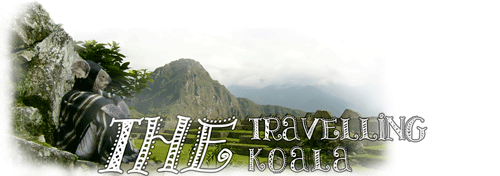Welcome to another Episode of a look at the Latin Music Scene in Melbourne
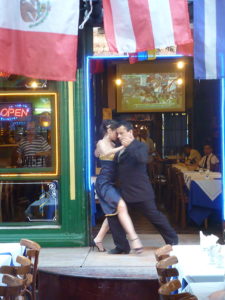
Latin music or Salsa? It’s all the same thing, isn’t it?
We’ve been looking at the origins Melbourne’s Latin music, with a focus on Salsa, and now it’s time to look right at the greatness of the Latin music scene in Melbourne. The last entry focussed on the way that Australia embraced multiculturalism in the late 80s and early 90s, and the way that the country embraced the ‘world music’ boom, in which Salsa was tied up. You can read about it here. In fact in many ways, Salsa had become an umbrella term for a number of different Latin styles. In this blog entry we’re going to have a look at the people who were behind the scenes. Who were these new musicians? Were they all Latino? How was this new music overall embraced by the Australian public? We’ll also look at Latin music as big corporate business and the ways that this played out in Australia with Groups such as Buena Vista Social Club.
Who actually were these Latinos?
A sizeable number of Italians and Greeks, who many people saw as having felt a particular affiliation with Latin music, became a large factor in the development of the Latin music scene, not only as patrons, but as salsa group members.[1] It is also noteworthy that Combo la Revelación was formed by Jorge Aguilar, who was not of Caribbean origin, but rather Peruvian, and the band, like many others at the time, played an eclectic mix of styles such as merengue and cumbia. Furthermore, the songs in the repertoires of such bands tended to be covers of classic salsa and Latin popular songs, rather than originally written pieces.
It could be said then, that in a certain way, many Latinos, and people who identified as being Latinos, who took up dancing and playing salsa and Latin music, were the result of an emerging and in-demand salsa scene, rather than the reason for it, as was the case in New York City. This mixture of Latino and non-Latino patrons and performers, in their various socio-cultural configurations, immersed in and shaping an eclectic mix of tropical Latin music, would set the precedent for the way the scene would unfold in the years to come.
The Rise of World Music
The broad understanding of non-western or ‘world music’ had fully entered the Australian consciousness around the beginning of the 1990s, and it was to have a lasting resonance. Bubacar Diop, of Senegalese world music group Bu-baca spoke of the way that this non-western music had been embraced by countless people.[2] Diop further spoke of the absence of problems, in spite of warnings of racist Australians who would pose a hindrance to his band’s shows, an occurrence that was all-too-common in places such as Paris, another city with a thriving world music scene. In fact, Bu-baca had received nothing but overwhelmingly positive responses, and their concerts from 1992 to 1995 consistently drew huge crowds.[3]
As the decade unfolded, much of the Australian public also continually demonstrated its readiness to move in a direction of cultural plurality with regards to popular music. The Music Hive Festival, promoted as being a multicultural event for all to attend, took place at the Footscray Community Arts Centre in 1994.[4] On the third of August, 1995, The Age newspaper published an article on the forthcoming Latin Stars Festival, and its featured dance group, Orquesta del Barrio, which was renowned for its Cuban-Puerto Rican salsa on the nightclub circuit. The article wrote:
‘…Orquesta del Barrio, which plies the Johnston Street nightclub circuit with its Cuban Puerto Rican salsa, is a good example of the multiculturalism Latin Stars celebrates. The rhythm section is mostly Chilean, the lead-singer is Peruvian, the horn section includes Australians, a Scot and a Russian.[5]
Melbourne’s Great Latin Music Scene…
By the middle of the week preceding the event, over 1,500 tickets had been sold. In addition to Orquesta del Barrio, Los Rumberos, who had by now transformed their image into an Afro-Cuban styled group, stylistically diverse groups Combo la Revelación, Espíritu Latino and Cacique, as well as the merengue group Furia, were among those that performed at the enormous gathering that year.[6]
Latin music, increasingly engaged in the musical experimentation of the era, had truly become a globalised phenomenon by this stage, experiencing commercial success in countries such as the United States.[7] Justo Díaz of Papalote had also observed that Latin music in Australia had flowered from a small-scale scene, frequented by an elitist ‘trendy’ type-crowd, into to a vibrant scene embraced by many of Australia’s music-loving public.[8] Clubs such as Bar Bakka and Copacabana opened their doors in Collingwood, and the Stage and Bolero began operating in the adjacent suburb of Fitzroy. These well-organised and comparatively commercial clubs marked the arrival of a scene unlike that of the one headed by places such as Café Clicquot, the Carlton Club, and Rosatti’s.[9]
The Bullring…
In 1994, a club known as the Bullring opened in Fitzroy. Containing the Spanish quarter of the city in the Iberian sense of the word, Fitzroy had been home to a developing Spanish music scene, with Flamenco events regularly taking place.[10] This direction was to change, however, when the owner, who had recently bought the venue, decided to convert it into a beacon for the new Latin American music scene. The Bullring fostered Melbourne’s Latin American culture throughout its blossoming years, and the nightclub subsequently became a Melbourne landmark, with its wrought iron Spanish-style gates, neon sign, its enormous gigantic wooden eye which spanned the staircase, along with its numerous mounted wooden bulls’ heads.[11] The Bullring also gained somewhat of an international reputation, with Chilean sailors frequently heading in the direction of Fitzroy after disembarking from their voyages.[12]
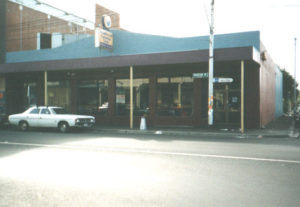
The Night Cat in Fitzroy. Credit: http://melbournepubguide.tripod.com/
Another venue which also developed into an institution was the Night Cat, which had opened in Fitzroy the following year. Los Cabrones, a fourteen piece Afro-Cuban band, began to play on Sunday nights to a capacity crowd in 1998, and they have not stopped performing since.[13] From the mid 1990s onwards, these venues and countless others were hosts to a circulation of regular local as well as international live acts. Located in the same geographical area, these places formed the backbone of a vibrant live music scene which lasted from the middle of the 1990s, up until recently.[14]
Melbourne’s Latin Dance Schools
With Latin music taking hold, and the establishment of a live music scene, the mid-1990s marked the rise of the now ubiquitous Latin dance school.[15] The Bullring and the Night Cat, merely two among many other venues, actively catered to the tastes of their generally non-Latino clientele by offering dance lessons. In fact, the classes were often taught by dance instructors heralding from anywhere but Latin America, a trend which kept in tune with the diverse socio-cultural makeup of the scene.[16]
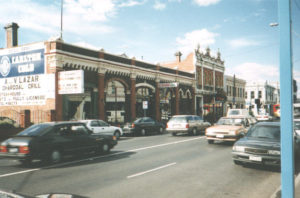
The Bull Ring in the 90s. Anyone know what stands there now? Credit: http://melbournepubguide.tripod.com/
The Bullring had seen hundreds of students learning to dance on a weekly basis, and at its highest point, the dance floor could be seen with up to five hundred people learning to dance such styles as salsa and merengue.[17]
Latin Music and the Worldwide Boom
The late 1990s brought yet another phase in the development of the Latin music scene. Melbourne’s rising numbers of Latin American immigrants contributed to the scene’s ongoing growth, yet if the corporate developments of the late 1980s had caused a tremble in the music scene, the late 1990s would cause an earthquake.
The release and enormous success of German film maker Wim Wenders’ Buena Vista Social Club, a documentary which chronicled the reuniting and the return to the stage of several retired Cuban son artists had a huge impact. Around the same time as the film’s release, successful international Latin popular music artists who incorporated salsa music into their performances, such as Ricky Martin and Jennifer López, had begun to appear. Progressions such
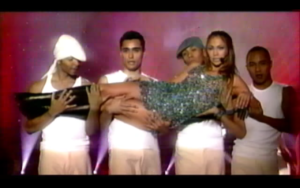
J- Lo in the 90s.
as these could be seen as part of an extension of the era marked by the emergence of the world music and non-western music scenes, insofar as these artists emanated from western countries, in this case, the United States. Martin, a Puerto Rican, had signed a contract with Sony, and López, a U.S.-born Puerto Rican, was reported to have a net value of thirty million U.S. dollars by the end of 2000.[18]
The worldwide boom in Latin music, erected on a massive Spanish speaking audience, had become a lucrative business, and consumption of all things Latin hit unprecedented levels in Australia during the following years.[19] Aside from the high record sales achieved by Latin popular music stars, salsa classes in one school in Perth, predominantly attended by non-Latinos, trebled from
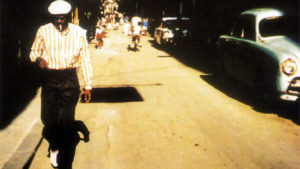
Buena Vista Social Club: a phenomenon.
40 to 120 people within the space of one year.[20]
That concludes our exploration of Melbourne’s 90’s Latin music scene. Next time we’ll venture out of the 90s and have a look at where Latin music ended up during the beginning of the Millennium.
Share this article!
